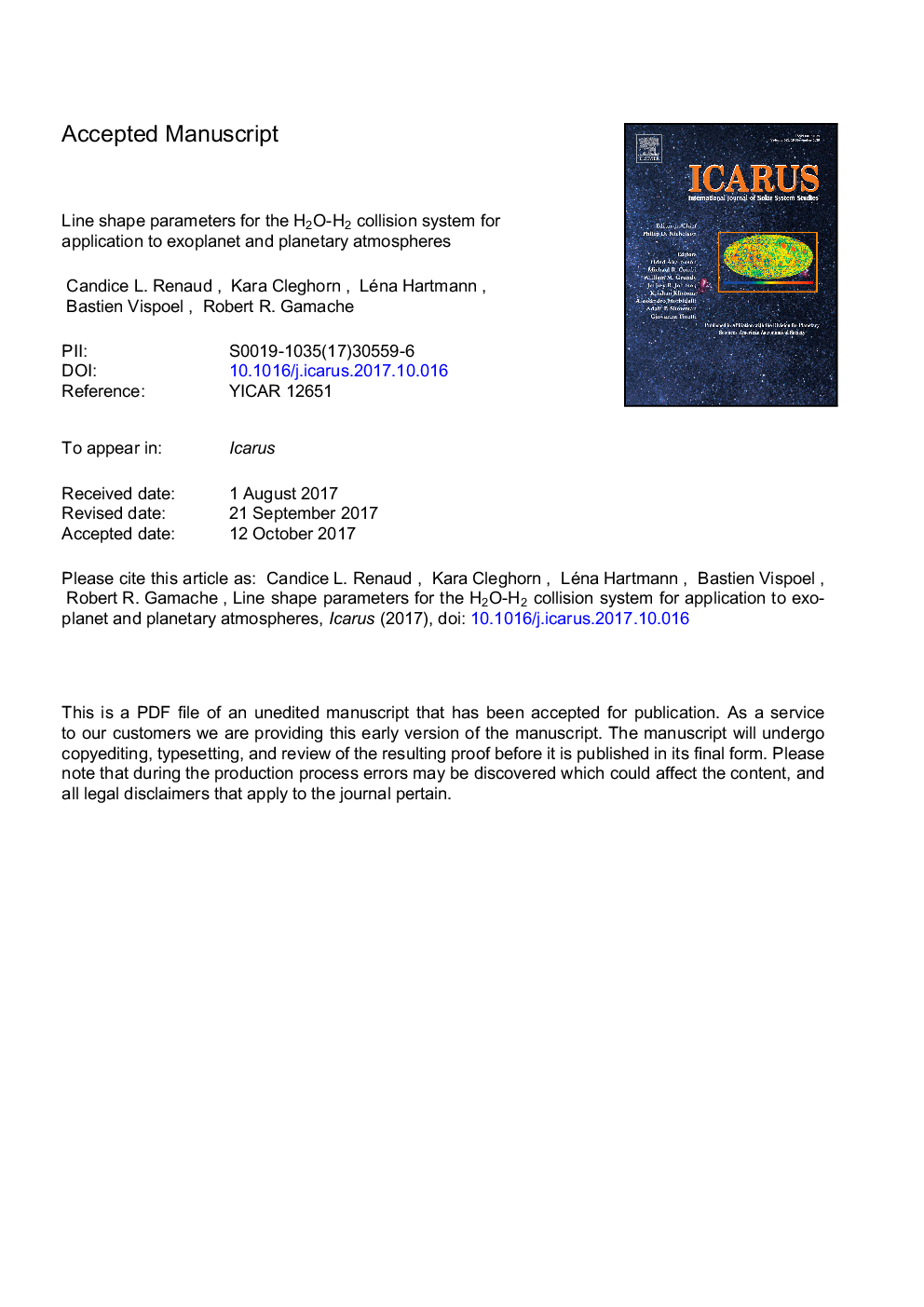| Article ID | Journal | Published Year | Pages | File Type |
|---|---|---|---|---|
| 8134317 | Icarus | 2018 | 49 Pages |
Abstract
Water can be detected throughout the universe: in comets, asteroids, dwarf planets, the inner and outer planets in our solar system, cool stars, brown dwarfs, and on many exoplanets. Here the focus is on locations rich in hydrogen gas. To properly study these environments, there is a need for the line shape parameters for H2O transitions in collision with hydrogen. This work presents calculations of the half-width and line shift, made using the Modified Complex Robert-Bonamy (MCRB) formalism, at a number of temperatures. It is shown that this collision system is strongly off-resonance. For such conditions, the atom-atom part of the intermolecular potential dominates the interaction of the radiating and perturbing molecules. The atom-atom parameters were adjusted by fitting the H2O-H2 measurements of Brown and Plymate (1996). Several techniques were used to extract lines for which there is more confidence in the quality of the data. The final potential yields results that agree with the measurements with â¼0.3% difference and a 5.9% standard deviation. Using this potential, MCRB calculations were made for all transitions in the pure rotation, ν2, ν1, and ν3 bands. The structure of the line shape parameters and the temperature dependence of the half-width, as a function of the rotational and vibrational quantum numbers, are discussed. It is shown that the power law model of the T-dependence of the half-width is inadequate over large temperature ranges.
Keywords
Related Topics
Physical Sciences and Engineering
Earth and Planetary Sciences
Space and Planetary Science
Authors
Candice L. Renaud, Kara Cleghorn, Léna Hartmann, Bastien Vispoel, Robert R. Gamache,
